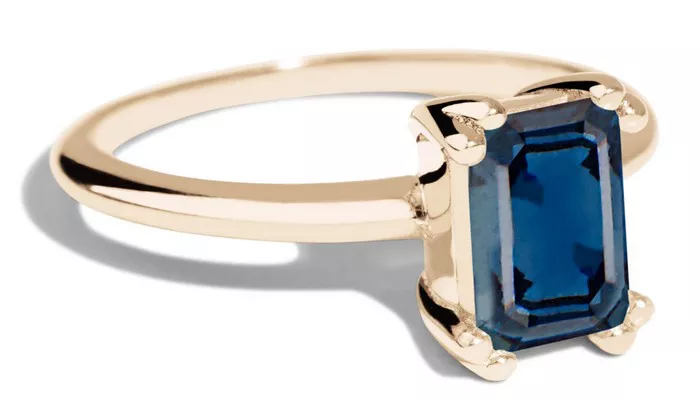Diamond rings are not just exquisite pieces of jewelry; they are symbols of love, commitment, and timeless elegance. The process of creating a diamond ring involves a series of intricate steps that blend craftsmanship, artistry, and precision engineering. From sourcing raw materials to cutting the diamond, setting it in a metal band, and adding final touches, each stage in the production of a diamond ring contributes to its beauty and value. This comprehensive guide explores the fascinating journey of how a diamond ring is made, detailing the craftsmanship behind one of the most cherished items in the world of jewelry.
Sourcing and Selecting Diamonds
1. Diamond Mining
Exploration and Extraction: The journey of a diamond ring begins with the mining of diamonds from deep within the earth’s crust. Diamonds are formed under high pressure and temperature conditions over millions of years.
Ethical Sourcing: Increasingly, jewelers prioritize ethical practices, ensuring diamonds are sourced responsibly and in compliance with international standards such as the Kimberley Process Certification Scheme.
2. Diamond Sorting and Grading
Sorting: Once mined, rough diamonds undergo sorting based on their size, shape, color, and quality characteristics.
Grading: Gemologists assess diamonds using established criteria such as the 4Cs (Cut, Color, Clarity, Carat weight) to determine their quality and market value. This grading process influences how the diamond will be cut and used in jewelry.
Diamond Cutting and Faceting
1. Planning the Cut
Design and Blueprint: Expert cutters plan the cut of each diamond to maximize its brilliance, fire, and scintillation. Computer-aided design (CAD) and modeling may be used to visualize the diamond’s potential shapes and proportions.
Optical Properties: Understanding a diamond’s optical properties, including light reflection and refraction, guides the cutting process to enhance its beauty.
2. Diamond Cutting Process
Cleaving or Sawing: The rough diamond is first cleaved or sawn into smaller, more manageable pieces known as “cleavages.”
Bruting: The diamond undergoes bruting, where two diamonds are rubbed together to create a rounded shape. This stage begins to give the diamond its basic form and symmetry.
Faceting: Highly skilled artisans then facet the diamond by cutting and polishing precise facets onto its surface. Faceting maximizes the diamond’s brilliance by allowing light to enter and reflect back in a dazzling display.
Designing the Ring Setting
1. Metal Selection
Choice of Metal: Jewelers select the metal for the ring setting based on factors such as durability, aesthetics, and customer preferences. Common choices include gold (yellow, white, or rose), platinum, and palladium.
Alloy Preparation: The chosen metal is often alloyed with other metals to enhance its properties, such as strength and resistance to tarnishing.
2. Ring Design and Casting
Design Concept: Designers create sketches or use computer-aided design (CAD) software to conceptualize the ring’s design, taking into account the diamond’s shape and dimensions.
Wax Model: A wax model or prototype of the ring is created using traditional carving techniques or 3D printing. This model serves as a template for the final ring.
Casting: The wax model is encased in a mold and heated until the wax melts away, leaving a cavity in the shape of the ring. Molten metal is then poured into the mold, solidifying to form the ring’s setting.
Diamond Setting and Mounting
1. Setting Preparation
Preparing the Setting: Jewelers meticulously prepare the ring setting to accommodate the diamond. This may involve shaping prongs, beads, or channels that will secure the diamond in place.
Prong Setting: One of the most common methods, prong setting involves bending and securing small metal prongs around the diamond to hold it securely in place while allowing maximum light exposure.
Bezel Setting: Alternatively, a bezel setting encircles the diamond with a metal rim, offering a secure and sleek design that protects the diamond’s edges.
2. Securing the Diamond
Expert Craftsmanship: Highly skilled jewelers delicately place the diamond into the prepared setting, ensuring it is positioned securely and perfectly aligned.
Final Adjustments: Any final adjustments to the setting or prongs are made to ensure the diamond is securely mounted and positioned for optimal light reflection.
See Also: Is Wearing a Diamond Lucky?
Finishing Touches and Quality Control
1. Polishing and Finishing
Refinement: The entire ring undergoes polishing to enhance its luster and remove any scratches or imperfections, achieving a flawless finish.
Detailing: Additional detailing, such as engraving or adding decorative elements, may be done to personalize the ring according to the customer’s preferences.
2. Quality Assurance
Inspection: Every diamond ring undergoes rigorous quality control checks to ensure it meets the jeweler’s standards for craftsmanship, aesthetics, and durability.
Certification:Some high-quality diamond rings are accompanied by certificates from gemological laboratories, verifying the diamond’s characteristics and authenticity.
Presentation and Customer Experience
1. Packaging and Presentation
Presentation Box: The finished diamond ring is elegantly packaged, often in a luxurious box or pouch, enhancing the overall customer experience.
Documentation: Essential documents, such as certificates of authenticity or warranties, are provided to the customer, ensuring transparency and confidence in their purchase.
2. Customer Satisfaction
Consultation and Service: Jewelers may offer consultations and after-sales services to assist customers with care instructions, resizing options, and maintenance advice for their diamond ring.
Symbol of Commitment: Finally, the diamond ring is presented as a symbol of love, commitment, and celebration, marking significant milestones in the lives of the wearer and their loved ones.
Conclusion
The journey of creating a diamond ring involves a blend of artistry, craftsmanship, and technical precision. From the natural formation of diamonds deep within the earth to the meticulous cutting, setting, and polishing processes, each step contributes to the creation of a cherished piece of jewelry. Whether as an engagement ring symbolizing a new chapter of love or a wedding ring representing unity and commitment in marriage, diamond rings hold profound significance and beauty that transcends generations. Understanding how a diamond ring is made illuminates the dedication and expertise behind these exquisite symbols of enduring love and timeless elegance.

